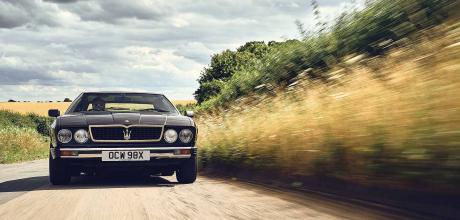1982 Maserati Kyalami
Alejandro de Tomaso rescued Maserati from the wreckage of the Fuel Crisis and based the new Ky alarm on a car of his own marque. Richard Heseltine says the surgery worked.
Photography Dominic James
BLOOD TRANSFUSION MASERATI KYALAMI
Marque saviour that's better than its reputation
He was a man of many enterprises, a maverick and a dreamer, a plotter and a schemer. There was a time when the Argentinian emigre Alejandro de Tomaso seemed intent on vacuuming up Italy’s motor industry, or at least those marques not owned by Fiat. Having been a so-so racing driver and an intermittently successful car manufacturer under his own name, he acquired Maserati when it was at its lowest ebb. He then set about turning it around. You could argue that the arrival of a new model would therefore have been cause for marching bands and a tickertape parade, but no. The Kyalami was — and remains — a cuckoo in the nest.
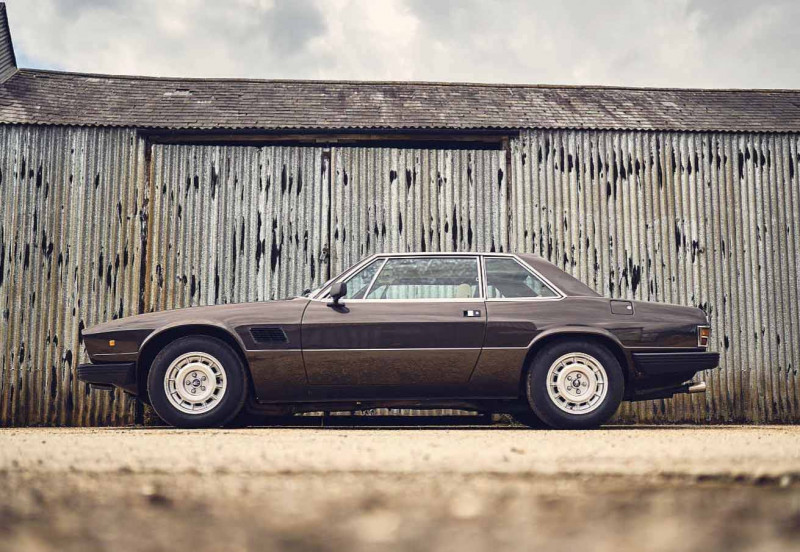
In order to understand its place in the marque firmament, first you need to understand Maserati. For all its success on- track and its grandee status among Italian marques, there have been just as many blows and bankruptcy hearings. Serial ownership, Italy’s political ructions and the pressure of outside forces have shaped one long fantastical yarn — one that often seemed just one tug short of unravelling. In many ways, on many levels, it is what makes Maserati so compelling. That, and maddening. When Maserati gets things right, they are oh-so right. And when it get things wrong? Let’s just say Maserati doesn’t screw up by halves.
By rights, the Kyalami should be one of the duds, not least because it wasn’t born a Maserati and it emerged during one of the marque’s bleakest periods. To appreciate its place in marque lore, you need to think back to December 1967 when Adolfo Orsi, whose family had controlled Maserati since 1937, sold a 60% stake in the firm to Citroen. In June 1971 the French concern acquired the remaining shares, and cross-fertilisation resulted in such striking creations as the Citroen SM and the Maserati Khamsin. However, by late 1974 it appeared as though Maserati was heading for the embalming table.
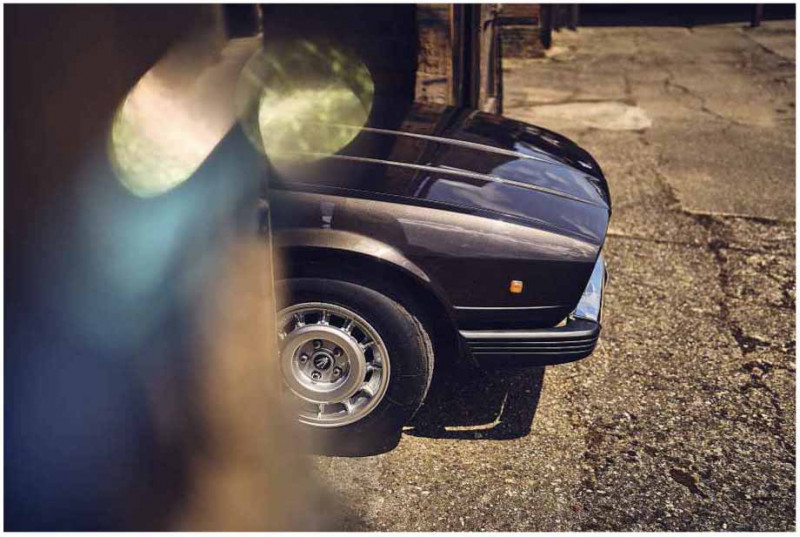
Demand for thirsty exotica had dwindled to nothing following the Fuel Crisis of 1973. Neither was the Maserati factory a happy place. The workforce had more than doubled on Citroen’s watch and wildcat strikes were rife. And then Peugeot took over Citroen in late 1974. One of the first orders of business was to find a buyer for its loss-making Italian subsidiary. There were no takers so, in the spring of 1975, it simply surrendered its Modena subsidiary to liquidators. This being Italy, or more specifically the Emilia- Romagna region that is the country’s motor valley’, the workers had no intention of being made redundant. They blockaded the factory, and...
Well, it is a very — very — long and tortuous story, the upshot being that agreement was brokered in August 1975 whereby the state-funded holding company GEPI entered into partnership with Alejandro de Tomaso. He acquired an 11.25% stake in Maserati, the deal ensuring that he would assume control and in time take over the firm in its entirety. This he did for the princely sum of £64. There was a proviso, though. De Tomaso would bravely take it on but only if the workforce was halved. This did little to inspire loyalty in the troops, but de Tomaso’s hard-nosed approach was understandable. Maserati had been making as few as 200 cars a year at the time of the crash.
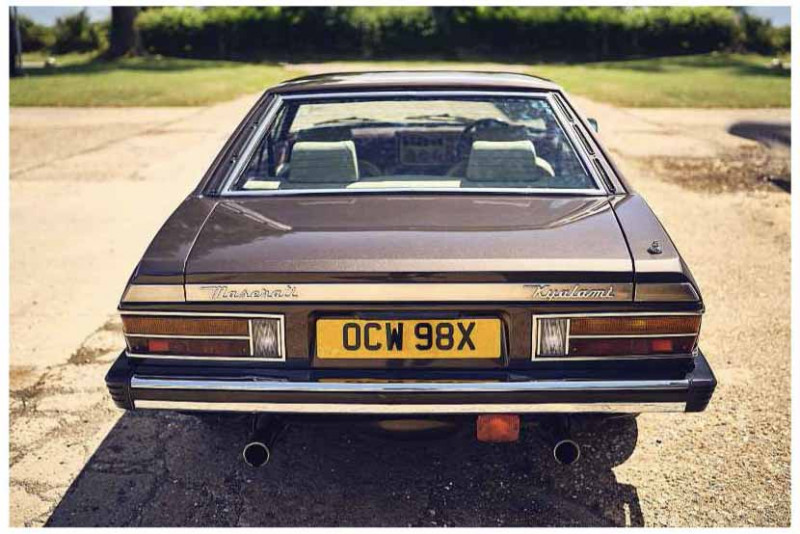
By the time of the takeover, it had tumbled to double digits. As such, de Tomaso reasoned that a flagship was needed; something fresh that would suggest that all was well. ‘Look, a shiny new model.’ But not for him creating something from scratch. That would require money. Instead, he initiated a little gene-splicing and came up with the Kyalami, the origins of which dated back to 1972.
This new’ car was nothing of the sort, as it was rooted in the De Tomaso Longchamp. Powered by a 5752cc Ford ‘Cleveland’ V8, the angular-looking coupe was a surprisingly capable mile-eater, if a leftfield choice. No surprise, then, that it sold in relatively small numbers despite remaining in production until as recently as 1986.
Inserting the enduring five-bearing 4.2-litre Maserati V8 into the space where the Blue Oval’s cast-iron lump had previously resided proved no great effort; there was plenty of room, after all. The suspension — double wishbones and coil springs up front, Jaguar XJ-esque wishbones, coils and radius arms with driveshafts as upper links out back — was left virtually untouched. There was a drop-off of 40bhp or so to around 270bhp, though on the flipside came a weight saving of 187kg. This more than compensated for the shortfall, though even then the Kyalami was no lightweight, given that it abused the scales at 1700kg.
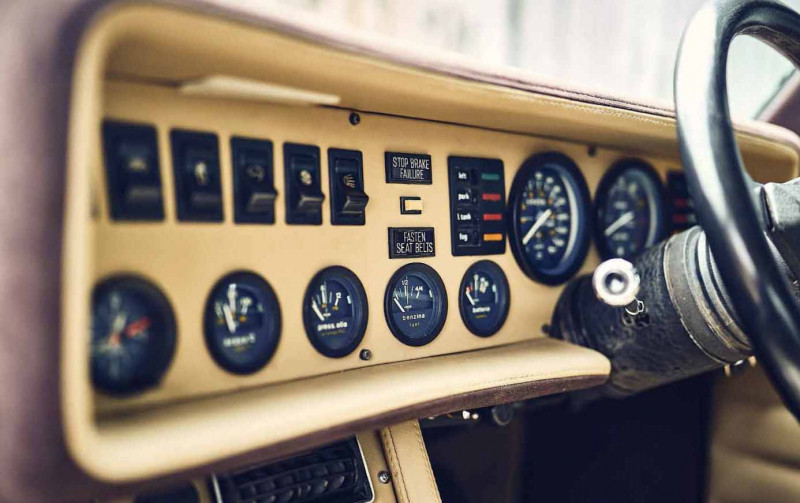
Then there was the body. The Longchamp had been styled by Tom Tjaarda, the Italian-domiciled Detroiter who also penned the Pantera. He had been instructed by his paymaster to borrow styling cues from the C107-series Mercedes-Benz hardtop, which he did under duress, though he also included a few nods to his masterful Lancia Marica show car from 1969. It fell to Pietro Frua to Maserati-ise the De Tomaso. All credit to the veteran designer, who was in the twilight of his career: despite identical hard points, the makeover was comprehensive. The nose, for example, appeared lower, with four circular headlights in place of the Longchamp’s rectangular pair.
‘IT IS BEGUILING, ESPECIALLY IN METALLIC MARRONE AND RIDING ON STYLISH CAMPAGNOLAS’
The bonnet was also new, as were the rubber-capped bumpers with built-in indicators. The C-pillars were slimmer and the Citroen SM tail-lights neatly integrated. By the time Frua was finished, the only panels interchangeable between the two cars were the lower door pressings. This interloper further broke with tradition by not being named after a wind. Instead, it honoured the venue of Pedro Rodriguez’s victory in the 1967 South African Grand Prix, Maserati’s last major win (even if it was merely as an engine supplier to the Cooper Car Company).
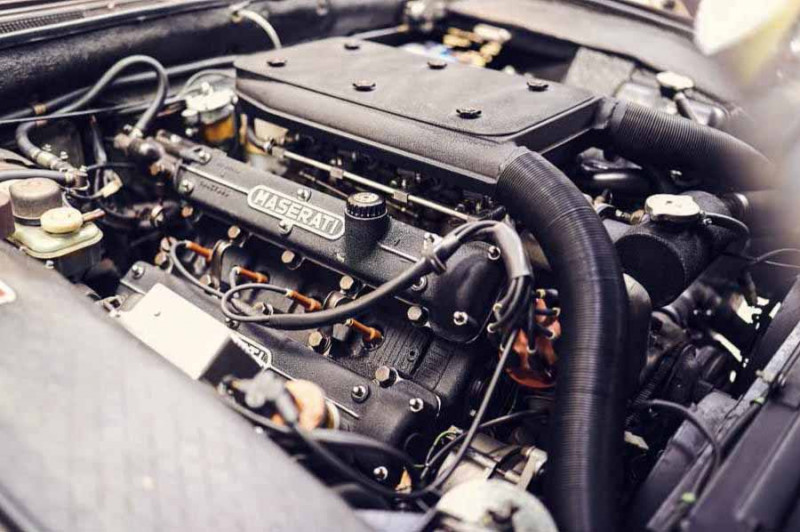
It was introduced at the 1976 Turin motor show and reaction was mixed. In its event report Road & Track avoided mentioning much beyond the fact that the Kyalami was there. Autocar, meanwhile, reported after testing one: ‘It does nothing which some less expensive, more widely produced cars — like Jaguars XJ-S — do as well and maybe better. It does nonetheless have appeal since it performs most satisfyingly, is truly practical, and handles like a genuine thoroughbred.’ Autosport concurred. ‘It’s a marvellously effortless magic carpet at really high cruising speeds, with excellent stability,’ it gushed.
Whether it was worth £21,188 — fully £8000 more than a V12-engined XJ-S — was a moot point: the Kyalami had exclusivity on its side and added a new’ model to the roster ahead of the push towards the mainstream and volume production in the 1980s via the Biturbo family. As many as 200 were produced to 1983, with 43 sold in the UK in period. However, there are some for whom the Kyalami will never be a real Maserati. The naysayers have presumably never driven one, because it is a better car than it has been painted in some quarters. It is strangely beguiling, in fact, especially when resplendent in metallic marrone and riding on super-stylish Campagnolo alloy wheels.
The Kyalami couldn’t be more soft-focus ’70s-tastic, even though this example was made in 1982. Despite its mixed heritage it still manages to look like a logical progression from prior models such as the Sebring and Mexico. Like them, it is handsome rather than beautiful. Yes, there are inevitable similarities with the De Tomaso Longchamp, that is a given, but it doesn’t look merely as though the corporate grille has been grafted on. It is rather fab inside, too, not least because the oatmeal and tan leather and Alcantara trim here has only recently been reinstated. It’s lavishly appointed, opulent even, with a few quirks that are typical of the period even if some thought clearly went into ergonomics, unlike with some of its contemporaries.
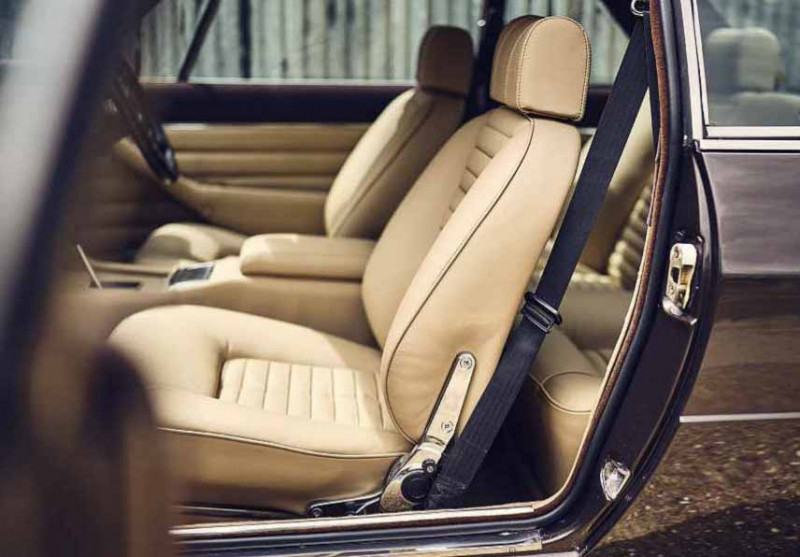
The switchgear, for the most part, is logically laid out and visible at a glance, though the steering wheel isn’t overly attractive. The fascia’s suede-effect top covering prevents reflections in the windscreen, plus there is — suspend disbelief — proper ventilation. It is comfortable, too, with space in the back for children. But the heart of any Maserati is its engine. Here in larger-displacement 4930cc form (an option from 1980), this quad-cam, chain-driven unit is a jewel. There’s a tingle of expectation on start-up, though it doesn’t raucously explode into life. That wouldn’t quite fit with the gentleman’s express ideal.
It’s also manacled to a Chrysler Torqueflite A727 auto box. The all-alloy V8 sounds strident only under kickdown. And how. The swell and soar of this marque staple remains a thing of wonder. The Kyalami is patently a cruiser, and isn’t epically quick by todays standards, but it sounds glorious when pressed. It’s flexible, too. Autocar recorded 24.3mph per 1000rpm in top and a 0-60mph sprint of 6.6sec (7.6sec for the 4.2-litre version).
It also handles well, better than preconceptions may have you believe. The ‘parts bin special’ image might lead you to suspect that it would be unfocused, that it was thrown together and not fully developed. But no. You wouldn’t expect to guide the Kyalami on its lock-stops, of course, but the Longchamp always had a decent chassis and having a lighter engine up front merely means it’s better. The Kyalami makes the most of its underpinnings, and the ride quality has real polish. Maybe it feels a bit soft in comparison with more youthful GT fare, but that is no bad thing: it’s pliant and well-damped. And that was once rather the point of a proper gran turismo. You could travel hundreds of miles in comfort rather than requesting an osteopath on arrival at your destination (today’s makers of exotica, please take note).
Unlike many other Maseratis of the period, there are no Citroen influences here. As such, there are no clonks and hisses while the hydraulic systems maintain operating pressure. The ZF power steering is the best of any big-engined GT from the marque produced during the 1970s and early ’80s. There’s heft when you want it and relatively little when you don’t, and you don’t find yourself steering by your fingertips. The all-round disc brake set-up works reassuringly well, too. Only excessive road noise and one or two blind spots detract, and even then it’s no big deal. Overall, there is much to like. The Kyalami may not have the bloodline of its more illustrious forebears but it is — whisper it — a better car than most of them in real-world conditions.
As for the vexed question of whether or not it’s a real Maserati, it rather depends on what constitutes ‘real’. There is appreciably more Maserati content here than in many recent models that have worn the Trident badge. It is also understated, which is something the marque historically did well. In times past, a Maserati was all about subtlety. Yes, owning one indicated your financial standing, but it did so without being obnoxious. Maserati wasn’t interested in comedy doors and highlighter-pen hues. The Kyalami is better than the sum of its parts, and the real trick is that the parts were rather good to begin with.
THANKS TO Andy Heywood, mcgrathmaserati.co.uk.
‘THE KYALAMI MAY NOT HAVE THE BLOODLINE OF ITS FOREBEARS BUT IT IS A BETTER CAR THAN MOST OF THEM'
TECHNICAL DATA 1982 Maserati Kyalami
- Engine 4930cc all-alloy V8, DOHC per bank, four Weber 42DCNF downdraught carburettors
- Max Power 280bhp @ 5500rpm
- Max Torque 303lb ft @ 3800rpm
- Transmission Three-speed automatic, rear-wheel drive
- Steering Rack and pinion, power-assisted
- Suspension Front: Double wishbones, coil springs, telescopic dampers, anti-roll bar. Rear: lower wishbones, fixed-length driveshafts, radius arms, coil springs, telescopic dampers
- Brakes All Vented Discs
- Weight 1700kg
- Top speed 154mph
- Acceleration 0-60mph 6.6sec
Opposite and this page No Detroit iron here, instead a full-blooded Maserati V8, 5.0 litres in this case; comprehensive instrumentation and plush seats are appropriate to the GT vibe.
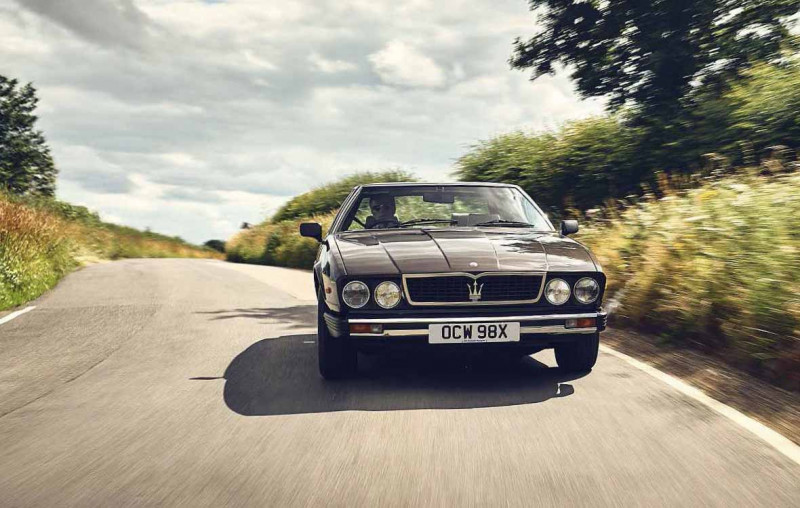
‘IT DOESN’T RAUCOUSLY EXPLODE INTO LIFE. THAT WOULDN’T FIT WITH THE GENTLEMAN’S EXPRESS IDEAL’
This page and opposite No less a stylist than Pietro Frua was employed to turn Tom Tjaarda's De Tomaso Longchamp into Maserati Kyalami; only the lower door panels were untouched.
'I'm an avid horse photographer and couldn't help but get excited when asked to photograph the Maserati Kyalami and all its 280 horsepower - what a beast of a carl I particularly loved its beautiful engine bay, so clean and superbly detailed yet such a powerful V8.’


